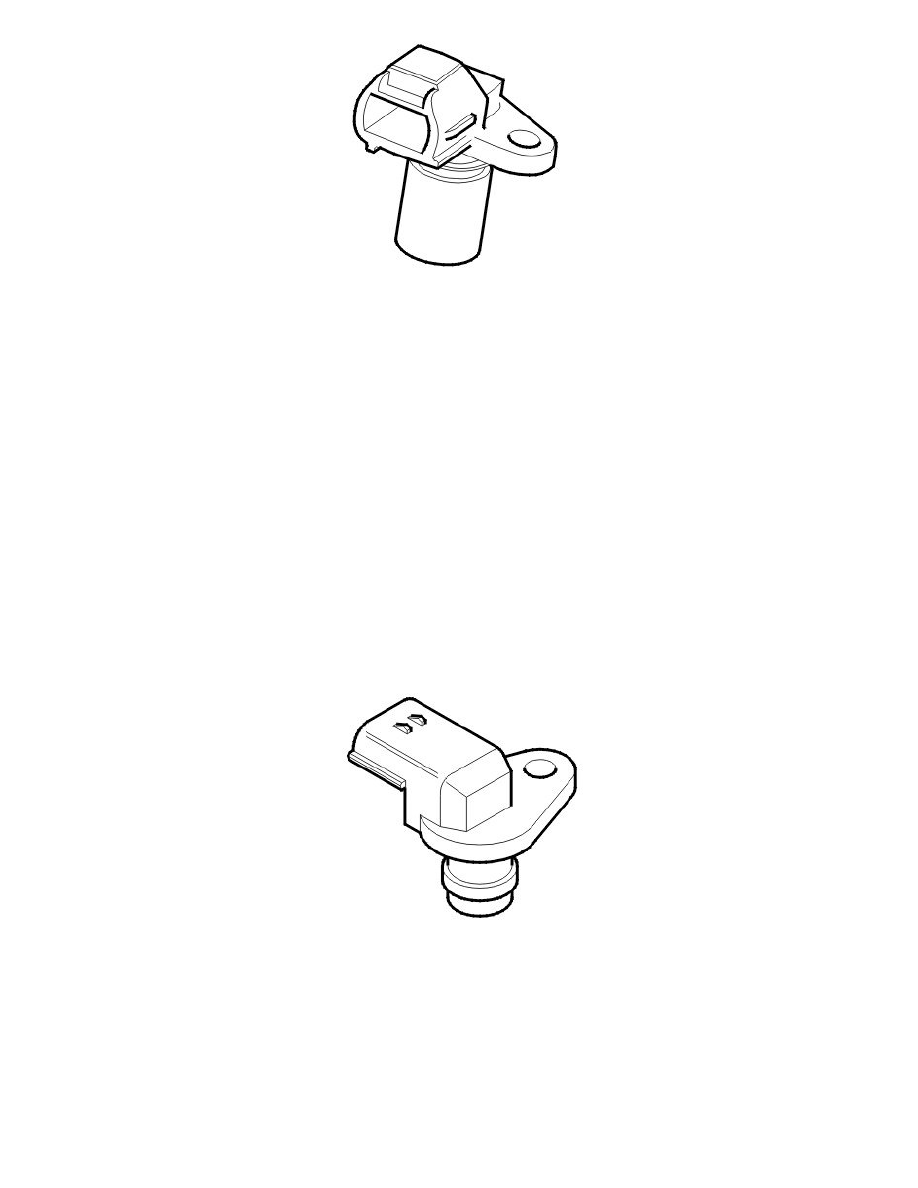S60 L5-2.4L VIN 64 B5244S6 (2003)

The engine speed (RPM) sensor provides the engine control module (ECM) with information about the speed and position of the crankshaft. The Engine
Control Module (ECM) is able to use the signal from the engine speed (RPM) sensor to determine when a piston is approaching top dead center (TDC).
However the engine control module (ECM) is unable to use the signal from the engine speed (RPM) sensor to determine whether the piston is in the
combustion stroke or whether the exhaust valve is open (exhaust stroke). A signal from the camshaft position (CMP) sensor is also required to determine
the operating cycle of the engine.
The signal from the engine speed (RPM) sensor is also used to check the engine for misfires (misfire diagnostics).
The engine speed (RPM) sensor detects the holes in a steel ring (stamped). This steel ring is welded to the edge of the carrier plate. The holes are
positioned at 6° intervals. This arrangement creates a hole for each tooth. There are 360° in one revolution. 6° between each hole means that there are 60
holes. However two holes are not stamped (long tooth - reference tooth). These holes provide a reference position for the crankshaft. The first hole after
the "long tooth" indicates 84° before top dead center in cylinder 1 on a 5 cylinder engine.
The engine speed (RPM) sensor is at the rear of the engine above the flywheel.
The sensor is inductive with a permanent magnet. An alternating current is induced in the sensor when the carrier plate passes the engine speed (RPM)
sensor. The generated voltage and frequency increases with the engine speed (rpm).
The signal voltage varies with engine speed (RPM).
The Engine Control Module (ECM) is able to determine the engine speed (RPM) by counting the number of holes per time unit. When the reference
tooth passes the engine speed (RPM) sensor, the voltage and frequency drop momentarily to zero, even though the engine is still running. This allows the
engine control module (ECM) to determine the position of the crankshaft.
If the signal from the engine speed (RPM) sensor is incorrect or missing, the control module will use the signals from the camshaft position (CMP)
sensor, on the condition that the position of the camshaft has been adapted and the car can be driven if there is no signal.
The engine control module (ECM) can diagnose the engine speed (RPM) sensor. The sensor value (engine speed (rpm)) can be read off using VIDA.
Camshaft position (CMP) sensor
The Engine Control Module (ECM) uses the signals from the camshaft position (CMP) sensor and the engine speed (RPM) sensor to establish the
operating cycle of the engine. This enables the engine control module (ECM) to:
-
start the engine more quickly
-
control the correct ignition coil and injector
-
function as a substitute for the engine speed (RPM) sensor
-
check the camshaft continuous variable valve timing (CVVT).
The pulse wheel on the camshaft has five teeth with different gaps which correspond to a specific cylinder.
For further information, also see: Knock sensor (KS), Engine speed (RPM) sensor and Function See: Powertrain Management/Computers and Control
Systems/Description and Operation/Engine Management System/Function
The sensor, which is a magnetic resistor with a permanent magnet, is grounded in the control module and supplied with current from the control module.
The signal voltage varies with the shape of the camshaft pulse wheel. When one of the teeth on the camshaft pulse wheel passes the camshaft position
